
New Delhi, which has been eyeing the MQ-9B Remotely Piloted Aircraft (RPA) for the Indian Navy, is now at the "advanced stage" of talks with Washington DC for the procurement of 30 of these Unmanned Aerial Vehicles (UAVs). The RPA's maker– General Atomics, offers the MQ-9B in two variants: the SkyGuardian and SeaGuardian. The government to-government purchase, estimated to be worth $3 billion, is likely to bolster India's surveillance capabilities along the Line of Actual Control (LAC) and the Indian Ocean Region (IOR).
The deal has long evaded finalisation. A highly placed source from the United States, knowledgeable about the developments surrounding the deal, told this writer that the problem with that sale has always been (and continues to be) some rather fierce opposition in the US Senate. It is possible that that could change, but the opponents are not keen on selling drones that can carry outside North Atlantic Treaty Organisation (NATO)+5 ((Israel, New Zealand, Australia, Japan, and South Korea).
The Arms Export Control Act effectively gives the Senate Foreign Relations Committee veto power over any arms deal. The committee has been violently opposed to armed Unmanned Aerial Systems (UAS) sales.
The source mentioned that the committee made an exception for NATO+5. However, that was supposed to be the only one. It is interesting to note that the State Department and the Department of Defense (DOD) approved sales of MQ-9Bs to India and the United Arab Emirates. Those deals still require approval by the Senate Foreign Relations Committee, and the course of action the committee will take remains unclear.
Diese Geschichte stammt aus der December 2022-Ausgabe von Geopolitics.
Starten Sie Ihre 7-tägige kostenlose Testversion von Magzter GOLD, um auf Tausende kuratierte Premium-Storys sowie über 8.000 Zeitschriften und Zeitungen zuzugreifen.
Bereits Abonnent ? Anmelden
Diese Geschichte stammt aus der December 2022-Ausgabe von Geopolitics.
Starten Sie Ihre 7-tägige kostenlose Testversion von Magzter GOLD, um auf Tausende kuratierte Premium-Storys sowie über 8.000 Zeitschriften und Zeitungen zuzugreifen.
Bereits Abonnent? Anmelden
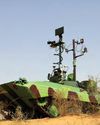
THE RISE OF UGVs REVOLUTIONISING TACTICAL AND STRATEGIC MILITARY OPERATIONS
MANOJ K CHANNAN explains the history of UGVs, their role in modern warfare, their integration with advanced technologies, and their broader implications for military operations, intelligence assessments, and human-machine collaboration

INNOVATIONS AND ADVANCEMENTS IN DEFENCE TECHNOLOGY BY MKU
The defence industry is evolving rapidly to address the dynamic challenges of modern warfare, and MKU is at the forefront of this transformation. In an exclusive interaction, VAIBHAV GUPTA, Director India Business of MKU highlights their innovative approaches, spanning advanced ballistic protection, cutting-edge night vision and thermal imaging technologies, and strategic partnerships to enhance India's defence capabilities. From pioneering protective solutions for soldiers to leveraging indigenous technological breakthroughs, MKU continues to redefine the benchmarks of excellence in defence technology.
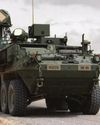
INDIA'S STRYKER CHOICE
India's selection of the US-made Stryker armored vehicle over the indigenous WhAP sparks debates on prioritiSing swift acquisitions and combat readiness versus commitment to self-
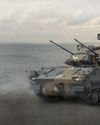
HANWHA AEROSPACE DEEPENS INDIA DEFENSE TIES AMID REGIONAL TECH RACE
Amid growing regional competition in defence technology, a prominent defence initiative is strengthening ties with India through successful artillery and air defence programs. This collaboration aligns with India's strategic focus on bolstering domestic defence manufacturing and reducing reliance on imports. By fostering advanced technology transfer and enhancing local production capabilities, the partnership is poised to transform the defence landscape in Asia, showcasing significant achievements in artillery systems, air defence solutions, and aerospace innovation

ADVANCING INDIA'S DEFENCE CAPABILITIES
Larsen & Toubro (L&T) is advancing India’s defence ecosystem with ground breaking innovations, including next-generation combat platforms, autonomous technologies, and cutting-edge systems, underscoring its commitment to India’s military modernisation, highlights ARUN RAMCHANDANI, SVP & Head – L&T Precision Engineering and Systems IC
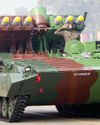
NEED FOR A LARGER ARTILLERY FORCE
At a time when India is increasingly facing a multi-front challenge on her borders, it is quite evident that the Indian artillery modernisation programme needs a massive thrust from the government, argues JYOTI SINGH
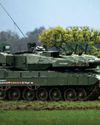
FORCE PROTECTION
The Indian Army faces an urgent need to equip Main Battle Tanks and Armoured Fighting Vehicles with advanced Active Protection Systems to counter modern threats and enhance battlefield survivability. The lack of such systems could be addressed with the combat-proven Trophy APS, writes ATUL CHANDRA
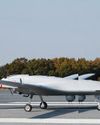
THE INDIAN ARMY AND DRONES
AMIT GUPTA argues why the induction of Drones, which have changed the face of modern warfare, into the Indian Army needs to be in greater numbers

TECHNOLOGICAL SYNERGY REDEFINED: IAI'S COMMITMENT TO INDIA-ISRAEL INNOVATION
BRIG. GEN. (RES) EYTAN ESHEL, Executive Vice President of Technology, Chief Technology Officer (CTO), R&D and Innovation of IAI, highlights how nearly 40 years of India-Israel collaboration has fostered innovation, leveraging India's deep-tech talent for global aerospace and defence advancements while promoting sustainability and co-developing solutions with Indian startups and institutions.

INDIA EMBARKS ON DECADE-LONG PROJECT TO DEVELOP FUTURE-READY COMBAT VEHICLE
With a substantial portion of its borders shared with neighbouring countries, it is essential for India to have modern and robust tanks for both defensive and offensive operations. In this regard, the FRCV's advanced capabilities allow it to face changing ground obstacles like land and air threats. It will provide a decisive advantage in future conflicts and enhance operational effectiveness through its integration with air power, writes JOSEPH P CHACKO